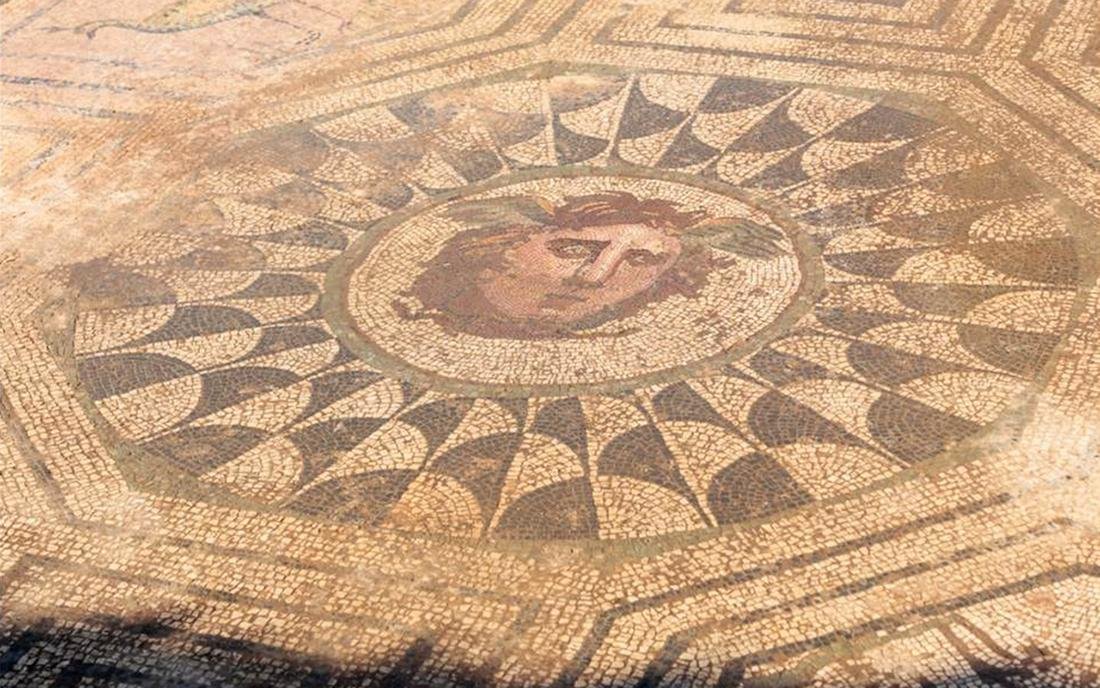Archaeologists excavating in the La Huerta de Otero Archaeological Zone, located in Mérida, Spain, have discovered a well-preserved Roman mosaic with a depiction of the mythological figure, Medusa.
 Credit: Merida City Hall
Credit: Merida City Hall
This archaeological zone is situated on the western side of Mérida and was once part of the Roman city of Augusta Emerita, which was established in 25 BCE by Augustus to resettle Emeriti soldiers from the veteran legions of the Cantabrian Wars.
Over time, Augusta Emerita became one of the largest Roman centers in Hispania, serving as the capital of the province of Lusitania and covering an extensive area of more than 20,000 square kilometers.
The recent excavations in the La Huerta de Otero Archaeological Zone have uncovered a large mosaic in the main room of a Roman domus, featuring a depiction of Medusa, one of the three monstrous Gorgons from Greek mythology.
The mosaic, which measures approximately 30 square meters, holds significant historical and artistic value. Researchers believe that the portrayal of Medusa was a prophylactic representation meant to protect the Domus inhabitants, a common theme seen in various Medusa depictions found across the Greek and Roman world.
The focal point of the mosaic is Medusa’s head, which is encircled within an octagonal medallion. Adding to its intricate design, the medallion’s corners contain peacocks, each representing one of the four seasons. Surrounding this central image are intricate patterns and motifs, including geometric designs and depictions of floral and animal themes, such as birds and fish.
Félix Palma, the Director of the Monumental City Consortium, emphasized the significance of this site due to the level of preservation and the well-preserved ornamental apparatus found in the house.
He commented that this site “is of an exceptional nature due to the level of conservation of the remains and, above all, due to the ornamental apparatus that decorates the well-preserved house: not only the mosaic but also paintings and sculptural motifs”.
The excavation work has also exposed a 40-meter section of the Roman city’s defensive wall. Moreover, remnants of a parallel-running road were discovered within the archaeological zone, further enriching the knowledge of the region’s historical infrastructure.
The La Huerta de Otero Archaeological Zone has garnered extensive interest from researchers and the public alike. In 2019, a comprehensive research project was initiated to document the site through archaeological excavations and geophysical surveys. Additionally, the remains have been adapted for public visits.
The excavation project is a collaborative effort involving multiple enтιтies, including the Consortium of the Monumental City, the Insтιтute of Archaeology, and the City Council. The Barraeca II Professional School of the City Council also played a vital role in the discovery. Students from the school actively participated in the excavation, contributing to the findings and preservation of this extraordinary mosaic.
Medusa, as a figure from Greek mythology, holds a significant place in ancient folklore. According to Britannica, Medusa was the most famous monster or Gorgon in Greek mythology and possessed snakes for hair.
However, before becoming a despicable monster, Medusa was originally a beautiful mortal woman who served alongside Athena, the goddess of wisdom and knowledge.





